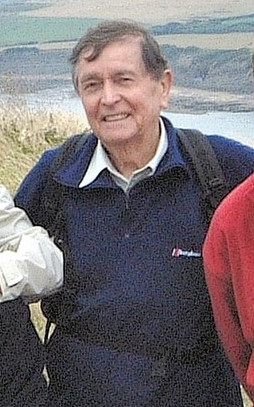 After Operation DEFRAUD in the Burmese jungle in 1945 the patrol leader, Major ER Breen, wrote in the debrief
After Operation DEFRAUD in the Burmese jungle in 1945 the patrol leader, Major ER Breen, wrote in the debrief
“I managed to collect a positively revolting gang of thugs from No.3 Troop whose sole object in life appeared to be the desire to put into practice all the non-British tricks learnt in unarmed combat, weapon firing... “
G A Davies was among those men.
 During World War Two Davies (George Albert) volunteered for Hazardous Service and was selected for Royal Marine Detachment 385, serving as a corporal (later sergeant) in No. 3 troop. It was at a time when Special Forces units did not advertise their purpose in the name, so it is no surprise that the blandly named Det 385 is hardly known about today. They were closely related to the earlier, and famously deceptively named, Royal Marine boom Patrol Detachment (RMBPD) who in reality were a raiding force responsible for one of the most daring Special Forces missions of the war; Operation FRANKTON.
During World War Two Davies (George Albert) volunteered for Hazardous Service and was selected for Royal Marine Detachment 385, serving as a corporal (later sergeant) in No. 3 troop. It was at a time when Special Forces units did not advertise their purpose in the name, so it is no surprise that the blandly named Det 385 is hardly known about today. They were closely related to the earlier, and famously deceptively named, Royal Marine boom Patrol Detachment (RMBPD) who in reality were a raiding force responsible for one of the most daring Special Forces missions of the war; Operation FRANKTON.
Det 385 was deployed to Ceylon (now Sri Lanka) for operations against the Japanese in Burma. They were trained in Canoes under the eye of Major ‘Blondie’ Hasler MC, who had led FRANKTON. The unit operated as part of the Small Operations Group (SOG) alongside the Army’s Special Boat Section (SBS), the Sea Reconnaissance Unit (SRU) and Combined Operations Pilotage Parties (COPP). Those units were more specialized than Det 385 who became the general purpose raiding, beach recce and deception unit. The standard modes of infiltration were to deploy their canoes from patrol boats or Catalina flying boats which would land on the water to unload them.
Det 385’s missions never attracted the fame of other units, but they were true special operations involving great daring and the high degree of professionalism which sets Special Forces apart.
Davies took part in Operation DEFRAUD launched on 18th April 1945. The mission was a Recce and Fighting patrol, with a secondary Deception motive. The force of ten men came ashore on Kamorta Island in the Nicoba Islands in two canoes and an ‘Intruder’ Inflatable boat. Davies was on the inflatable. They had been transported to within paddling range by the submarine HMS Thresher. A second Intruder was carried to be left on the beach as a ‘plant’ as part of the deception plan to lead Japanese forces to suspect greater allied intentions in the area.
At 2300Hrs on 18th April 1945 the canoes and intruder were launched from the submarine 4 miles west of Mt. Edgecombe. Ropes were thrown between the boats and they were taken in tow by the submarine’s periscope, to a point approximately 2000 yards offshore. The canoes slipped stealthily towards the shore but the spare Intruder, intended as a decoy, inextricably inflated as they paddled towards the shore, creating a racket.
At about 110 yards offshore the leader and another swimmer (Cpl Edge) left one of the canoes and conducted a recce. They found footprints and signs of recent activity. When the full party landed they scoured the beach, stalked a tree they thought was a sentry and generally looked for mischief. With none being found they reluctantly made an exit, with Major Breen remaining longer and firing shots in an attempt to draw a Japanese patrol, They were out of luck. They left without major incident. The mission did not achieve its fighting patrol aim, but it did likely succeed in the Intelligence gathering and deception objectives.
A couple of months later Davies was again operating behind enemy lines, being a member of Operations DECLARE and SUBTRACT. These involved the planting of supply caches on deserted islands in the Malacca Strait for the future use of down allied airmen. For these operations teams from Det 385 were inserted by Catalina flying boats.
After the War Davies was commissioned and served as an officer with what is now known as the Special Boat Service (SBS).
I never met nor talked with Davies personally but I came across his name researching Det 385. He is a name and character you come across when you are interested in the field, for example his unit was the subject of Special Publication 18 of the Royal Marines Historical Society. Obitury at Torquay Herald Express website
For anyone interested in Det 385, I’d recommend the Royal Marines Historical Society publication. Det 385 is also covered in the Covert Shores book
